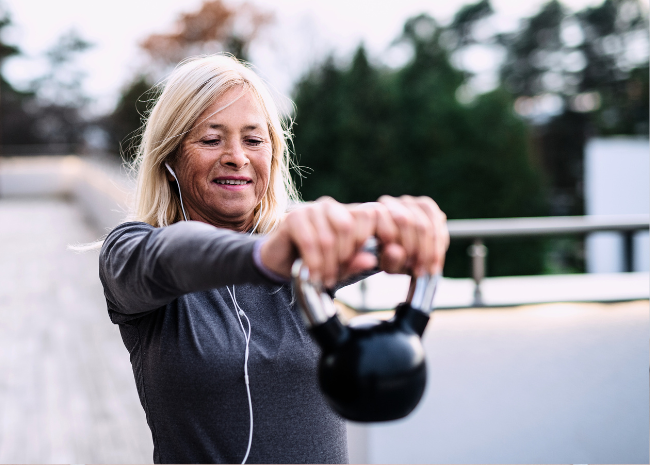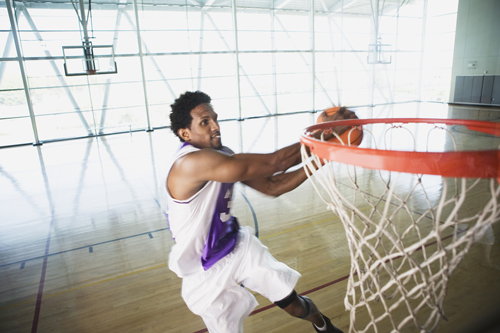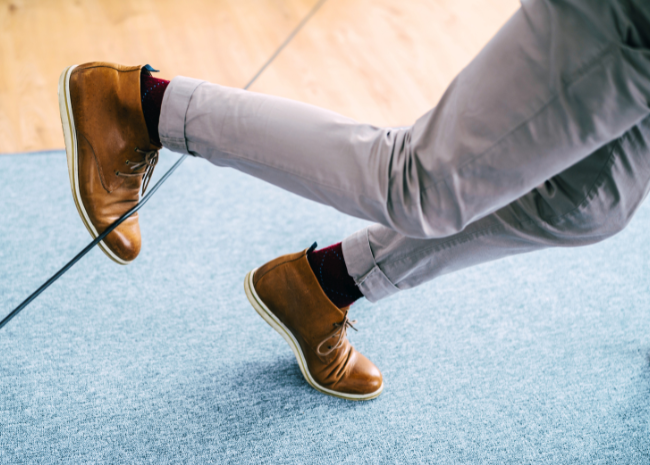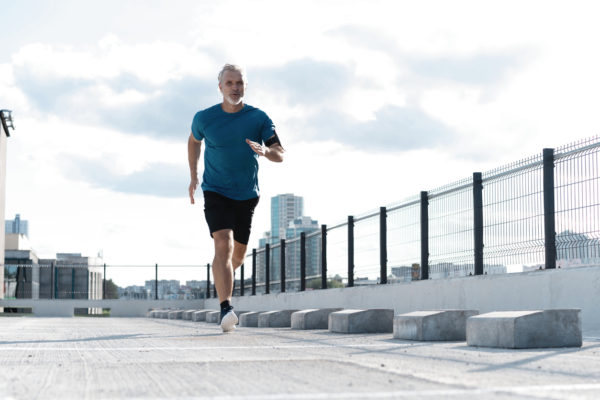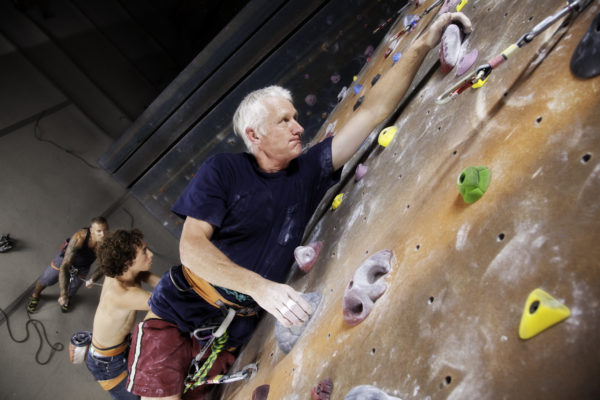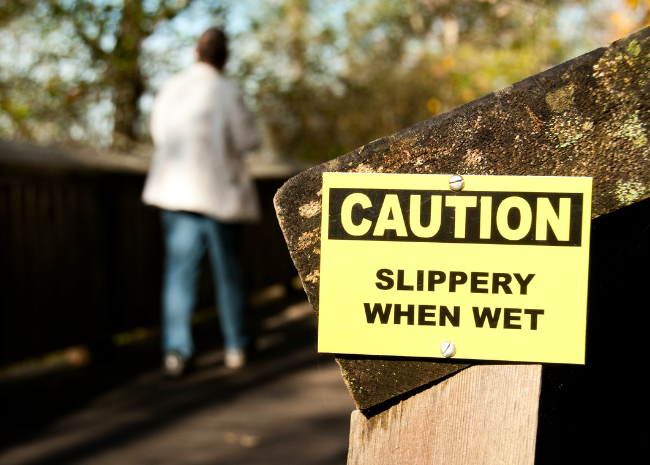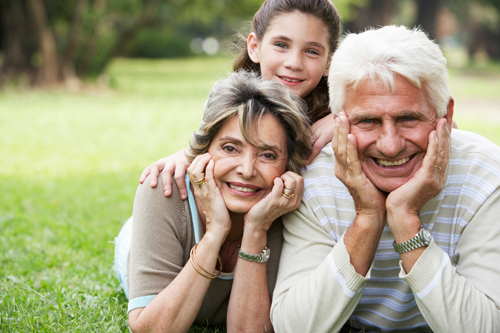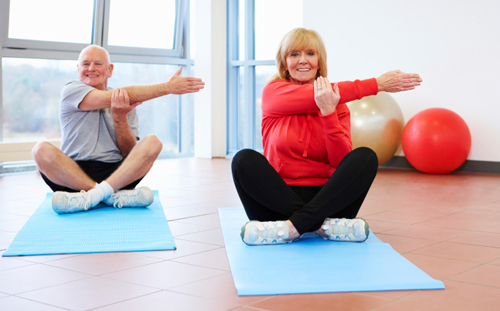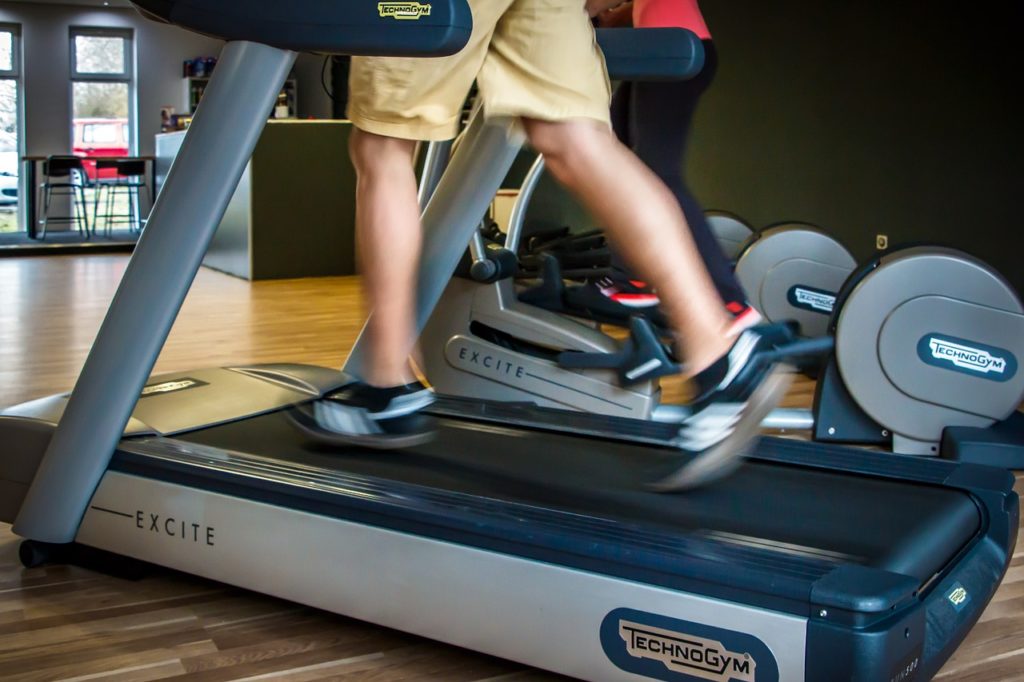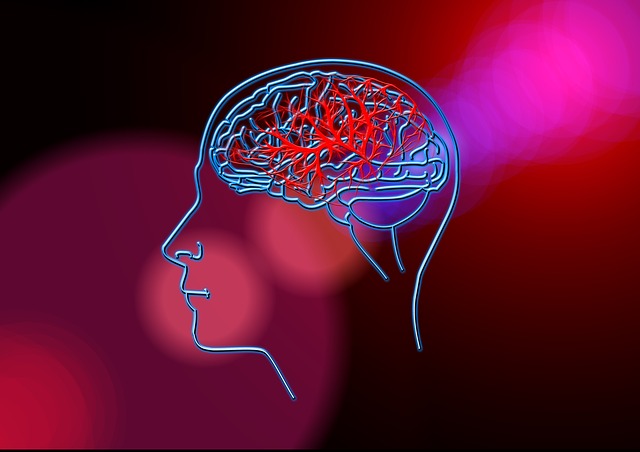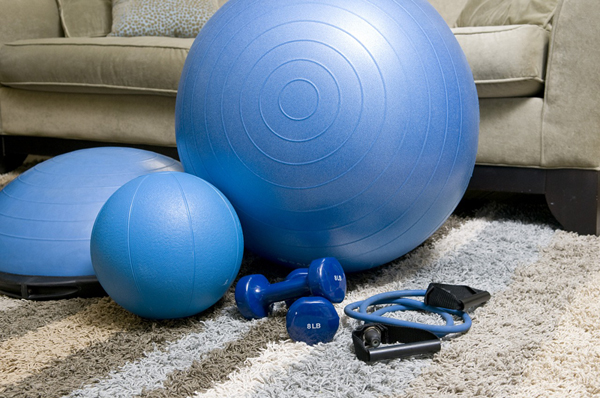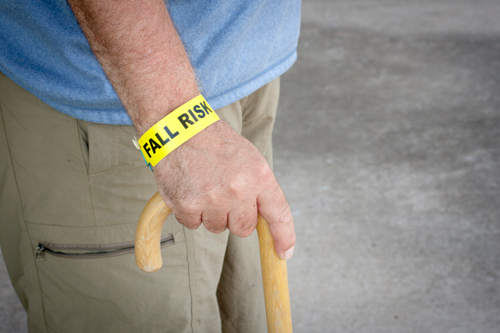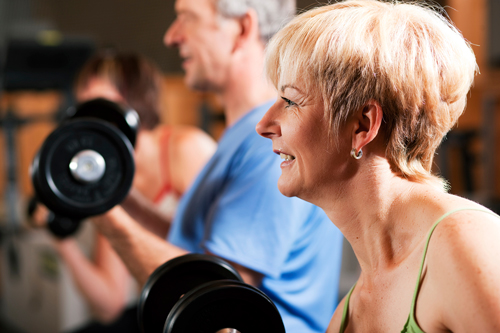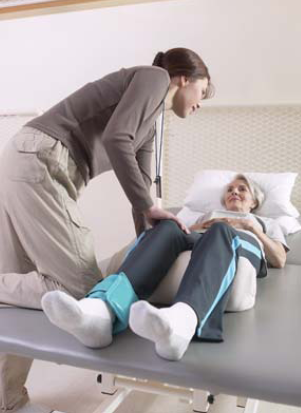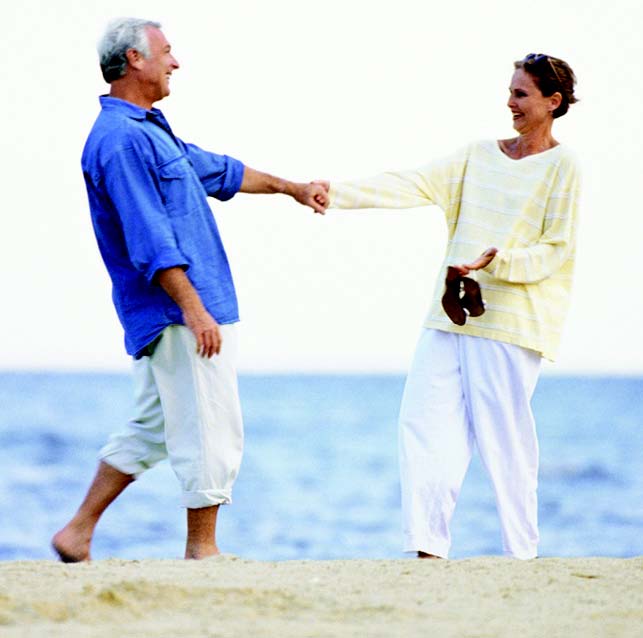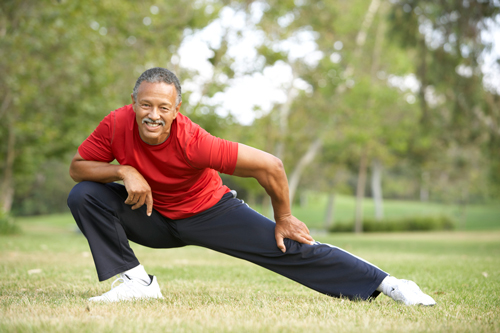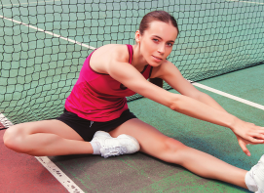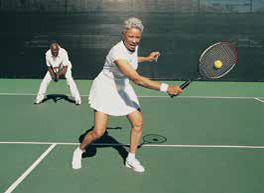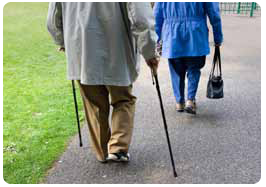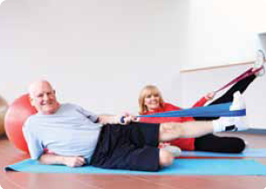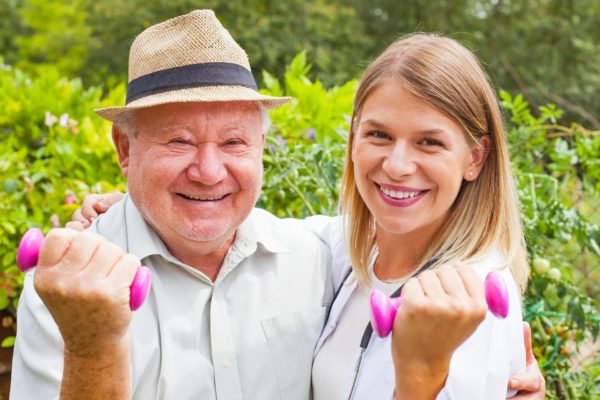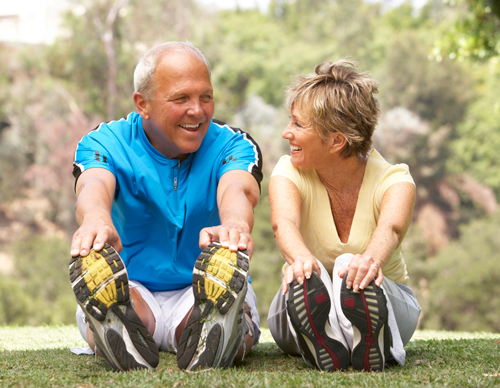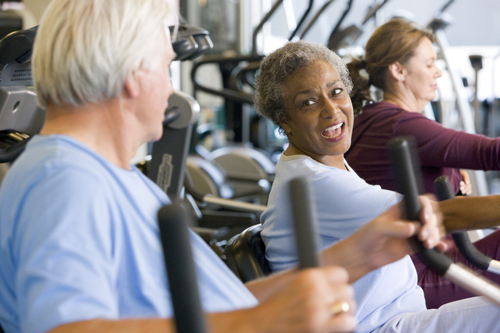From Our Blog
Health and Wellness – Aging
Physical Therapy For Rheumatoid Arthritis: Managing Pain & Mobility
Rheumatoid Arthritis: An Overview More common among women than men, rheumatoid arthritis is a chronic autoimmune disease in which your body attacks the joints, starting as painful swelling in the hands and feet. Though it primarily affects people older than 40, it can strike at any age. And while there is no cure, treatment for […]
Fall Prevention Exercises: Can Exercise Prevent Falls?
The Importance of Exercise in Fall Prevention Falls. They’re a concern for many older adults, ranging from minor stumbles to serious accidents with long-lasting consequences. But here’s some good news: staying active with the right exercises can significantly reduce the risk of falling. While exercise is often associated with shaping up and boosting cardiovascular health, […]
What age should you stop playing basketball?
If you have ever wondered whether basketball is too stressful on your body as you age, you are not alone. Many people worry that older adults should not enjoy the benefits of fast-moving sports like basketball, for fear of injury or health. However, when it comes to the question… “Am I too old for basketball?” […]
Don’t Fall! 5 Tips to Keep You Safe
The Jackson Clinics is dedicated to ensuring the safety and well-being of our patients, especially seniors. Falls are a significant health concern, particularly for the elderly, and can lead to serious complications. In this article, we’ll explore 5 fall prevention tips to keep you steady on your feet and living life to the fullest. Understanding […]
Step-by-Step Relief For Knee Osteoarthritis
What is Knee Osteoarthritis? A common condition among older adults, osteoarthritis, develops when the cartilage that usually serves as a cushion in a joint wears away, leaving bone to rub against bone. The American Academy of Orthopedic Surgeons estimates that more than 8 million Americans older than age 45 suffer from osteoarthritis of the knee. […]
Does Aging Actually Slow Us Down?
As most parents will attest, we are constantly amazed by the things our children attempt/accomplish, especially at an early age. Watching them go makes it impossible not to wonder, “How do they have so much energy? Does aging actually slow us down?” My latest experience of amazement came on our trip to Maine, as I […]
Fall Prevention: Are You At Risk?
Did you know, according to the CDC, one in every three adults 65 and older suffers a fall each year in the United States, making Fall Prevention Programs critical for long-term health. Let’s face it: the numbers are staggering. As we age, it appears that there is a direct link between the gradual loss of […]
Build for a Healthy Retirement Now
Some good news for people in their 30s, 40s, and 50s who exercise and are fit: A long-term research study recently published in the Archives of Internal Medicine found that the more fit you are during your midlife years, the lower your risk of developing chronic diseases in old age. This holds true for both […]
Paget’s Disease: Treating with Physical Therapy
A slow-progressing bone disease that typically afflicts older adults, Paget’s disease involves excessive and abnormal remodeling of bone. Throughout our lives, bone continuously breaks down and “re-forms” new bone; cells called osteoclasts absorb this broken-down bone matter, and osteoblas ts create new bone. Paget’s disease creates an imbalance in the way these cells interact, resulting […]
Bone Up to Fight Osteoporosis
Primary osteoporosis is the name given to osteoporosis cases not caused by an underlying drug reaction, disease or syndrome. In this condition, the bones—the word itself means “porous bones”—become brittle, making them highly susceptible to fracture. An event as innocuous as landing the wrong way when sitting down on a chair or twisting awkwardly during […]
Treadmill Rehabilitation After Stroke
The treadmill used by a person after experiencing a stroke is not your average gym model. It is specially designed to help the rehabilitation process, walking in particular. In locomotor treadmill training, a harness secures the patient and helps support some of his or her body weight. As the patient gains strength and the skills […]
Recognizing and Treating a “Mini-stroke”
No permanent damage results from a transient ischemic attack (TIA), sometimes called a mini-stroke. It is caused by a short-term blockage of a blood vessel supplying blood and oxygen to the brain. Although its effects—which can include trouble speaking, dizziness, blurred vision and weakness on one side of the body, among other signs—last less than […]
Strong Quads Help Fight Osteoarthritis
Many individuals experience pain from osteoarthritis, also called degenerative joint disease, the “wear and tear” version of arthritis. It can occur in any joint but is especially common in the knee. Your knee is a complex joint where the thigh bone (femur), a lower leg bone (tibia) and the kneecap (patella) come together. These bones […]
Ways to Avoid Taking the Fall
Each year, injuries from falling afflict many adults— the majority of whom are senior citizens—causing painful fractures and leaving them with severe mobility problems. Changes related to aging, such as decreases in visual capacity, hearing and strength, can contribute to the likelihood of a tumble. Whether you are a senior or you have an elderly […]
The Slow Creep of Muscle Weakness
Most of us have heard about the dangers of osteoporosis, an age related condition that results in weakened, easily broken bones. But as we age, we don’t think much about losing muscle strength. Sarcopenia , the medical term for muscle loss, develops gradually. It begins around age 35, but at first the loss is slow— […]
Rehabilitation After Multiple Fractures to the Pelvis
Pelvic fractures are complicated by nature. The pelvis is actually made up of three “rings” of bone: one major, large ring and two smaller rings. While a mild fracture of the pelvis can heal on its own, more serious fractures like those sustained in automobile accidents often require surgery and intensive physical therapy rehabilitation. Because […]
Stay Loose as You Age
When you climb out of bed each morning, you may wonder why your muscles are so stiff. After all, you just slept a full eight hours! Why don’t you feel rested and limber? There are several reasons why you may feel sti ff each morning. As we get older, there is an underlying physical tendency to […]
Vestibular Rehabilitation — The Jackson Clinics Physical Therapy
Vestibular Rehabilitation Struggling with balance issues or dizziness? Our specialized vestibular rehabilitation therapy is here to help you regain control and enhance your quality of life. At The Jackson Clinics, we understand how vestibular disorders can impact your daily activities and overall well-being. First, let's dive into what is vestibular rehabilitation, the benefits of physical [...]
Decreasing Cartilage Loss in Osteoarthritis
Although some over-the-counter nutritional supplements have been advertised as capable of rebuilding cartilage in arthritic joints, the claims most often do not stand up under scientific scrutiny. To protect damaged cartilage, the most important things you can do are strengthen the muscles that support the joints in your body affected by osteoarthritis and make them […]
Tennis and Golf: Keep Swinging as You Age
It’s a hard fact to swallow: Age eventually catches up with all of us, no matter how active we may be. Unless we work to maintain strength and flexibility, we slowly lose both as we age. Even the most avid golfers often notice that they lose distance in their drives and tennis players lose velocity […]
Can We Get Stronger as We Age?
The answer to that question is—absolutely! After age 40 or so, we all begin to lose muscle strength and bone density, and our hormone production slows. While these factors can contribute to a general decrease in vitality, weight training can increase your strength—and give you other benefits—no matter how old or weak you are when […]
Fit Over 50: Weight Training for Older Adults
Do the words “weight training” bring to mind sweaty 20-somethings in tank tops pumping iron? It may surprise you to hear that the group that benefits most from weight training is actually senior citizens, especially those who are sedentary or in poor health. As we age, our muscles slowly begin to atrophy, a process called […]
Lose Your Balance, Gain Your Balance
Feeling off-balance can put your world into a tailspin—literally and figuratively. Balance disorders have a long list of causes: inner-ear problems, cognitive or spinal cord injuries, muscle weakness or damage, diabetes, Parkinson disease and even simple aging. Regardless of the cause, balance disorders can put people at high risk for falls and disrupt daily activities […]
At Your Service: Tennis Tips for Older Players
Fun and engaging, tennis can be played at any skill level and at any age—well into one’s retirement years. Because it can help those over 50 maintain their physical fitness, tennis may prevent some of the injuries that so often plague seniors and proactively counter natural age-related changes. As a tennis player who has reached […]
Don’t Be Felled by a Fear of Falling
Fear of falling increases as we age—and with good reason. About one of every three adults aged 65 and older falls each year. In 2010, more than 2.3 million nonfatal falls were treated in emergency rooms, resulting in more than 662,000 hospitalizations. A staggering 95% of all hip fractures are related to falls. In people […]
The Golden Age of Fitness
As we get older, we may still feel young mentally, but after age 50 or so, we must acknowledge that our bodies need slightly different physical accommodations than we did earlier in our exercising lives. Working out reduces the risk of cardiovascular disease, osteoporosis, breast and colon cancer, depression and type 2 diabetes, for starters. […]
Fighting Arthritis? Strengthen Your Muscles
Arthritis may be a joint disease, but strengthening the muscles is an important component in its treatment. That is because a leading cause of limited movement in people with arthritis—especially, for instance, knee arthritis—is the weakening of surrounding muscles, rather than pain, dysfunction or abnormalities in the joint itself. This raises an important question: Is […]
Personalized Rheumatoid Arthritis Strategies
You and a friend both have rheumatoid arthritis (RA), but your treatment regimens are very different. You wonder why, for are not all cases of RA basically the same? Broadly speaking, any incidence of RA occurs because the body attacks its tissues as if they were foreign bodies. This is the hallmark of an autoimmune […]
Exercise and Osteoarthritis
After receiving a diagnosis of “arthritis of the knee,” which is the most common form of osteoarthritis, you might be surprised when your doctor recommends exercise. Because osteoarthritis involves a progressive deterioration of the protective joint cartilage, the bone is exposed within the joint—leading many to believe that exercise would only intensify the condition. This, […]
Simple Steps to Treat Bone “Thinning”
As we age, both men and women experience changes in bone composition. One such change, thinning (loss of mineral content) of the bones—typically in your lumbar spine and hip—tends to be experienced more frequently and to a greater degree by women, particularly following menopause when estrogen levels drop. Types of Bone Thinning Your treatment will […]
Maintaining Bone Health as We Age
The National Osteoporosis Foundation estimates that osteoporosis is a major health threat for 55% of people 50 years of age or older. Ten million people— 80% of them women—have osteoporosis, and almost 34 million people have low bone mass and are at an increased risk to develop the disease. With one in two women and […]
Subscribe to Monthly Health & Wellness Tips


